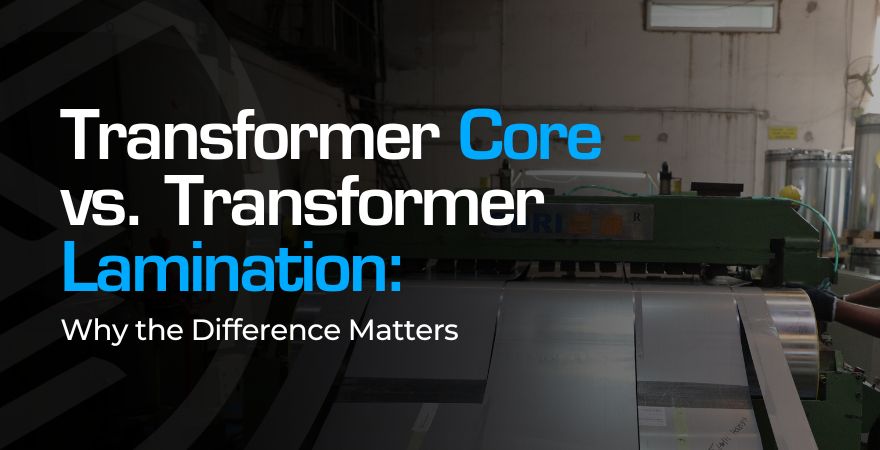When you’re working with transformers, there’s one thing you can’t afford to overlook: the design of the core. But here’s where many people confuse things: they often mix up a transformer core with a transformer lamination.
These two terms are often used together, but they don’t mean the same thing. In fact, understanding how they’re different is key to building transformers that are not only efficient but also long-lasting and cost-effective.
Let’s break it down in simple, practical terms, no jargon, just clarity.
Know The Difference of Transformer Core vs. Transformer Lamination
What Is a Transformer Core?
The core is the magnetic heart of the transformer. It allows energy to transfer between the primary and secondary windings through magnetic induction. Without a properly designed core, the transformer cannot function effectively.
But here’s what many don’t realize: a transformer core isn’t a single solid block. It’s made up of several thin layers of steel, stacked together. These layers are called laminations and they play a crucial role in minimizing energy loss.
So, What Are Laminations?
Laminations are thin sheets of electrical steel usually CRGO (Cold Rolled Grain Oriented) that are individually cut and stacked to form the transformer core. Each sheet is coated with a thin insulation layer to reduce eddy current losses, which are unwanted electrical currents that generate heat.
By using many thin laminations instead of a solid piece of metal, transformers stay cooler and operate more efficiently. This small detail leads to major improvements in performance and lifespan.
The Key Difference
Here’s a simple side-by-side comparison:
| Term | What It Means |
|---|---|
| Transformer Core | The complete magnetic structure made by stacking steel laminations |
| Transformer Lamination | The individual thin steel sheets used to build the core |
Think of the core as a finished book and the laminations as the individual pages. Each one matters.
Why is the core of a transformer laminated?
Because this difference directly affects:
- Energy Efficiency: Poor lamination quality = higher energy loss
- Heat Management: Good lamination design reduces overheating
- Transformer Life & Cost: A well-built core lasts longer and saves more
In short, better laminations lead to a better core and a better transformer.
What Sarjani Coretech Brings to the Table
At Sarjani Coretech, we build high-precision CRGO laminations and transformer core assemblies designed for top performance.
- Low core loss
- Burr-free edges for tight stacking
- Mitred and rectangular options
- Custom sizes based on your transformer design
Whether you’re building a compact distribution transformer or a high-load power unit, we help you get the core right from the inside out.
Final Thoughts
When you understand the difference between the core and laminations, you make smarter decisions about transformer performance and efficiency.
Laminations are the building blocks. The core is the finished structure. Together, they drive your transformer’s success
Need guidance for your next transformer project?
Let Sarjani Coretech help you choose the right material and core design : customized for performance, reliability, and energy savings. www.sarjanicoretech.com | info@sarjanicoretech.com

